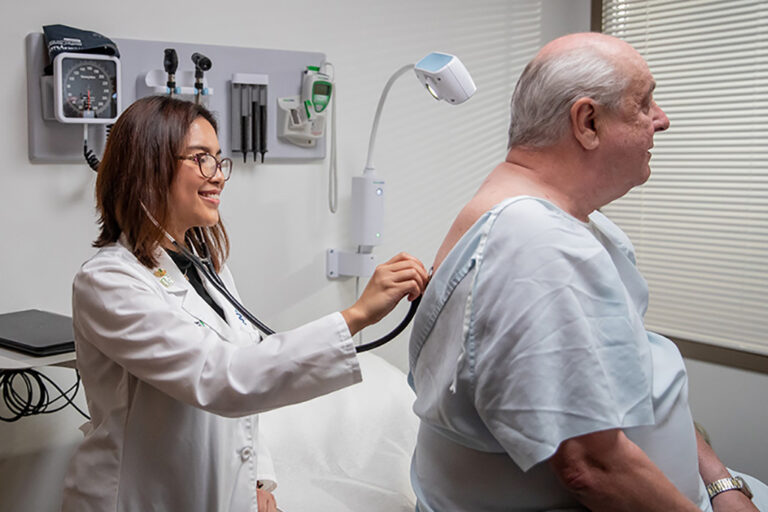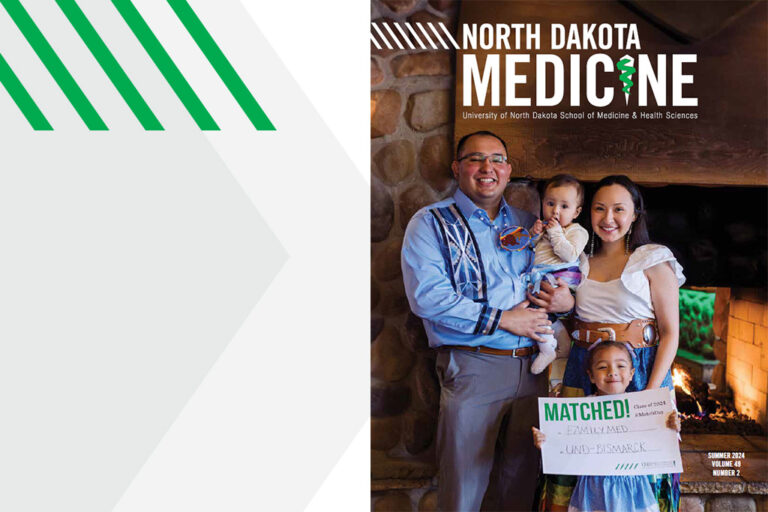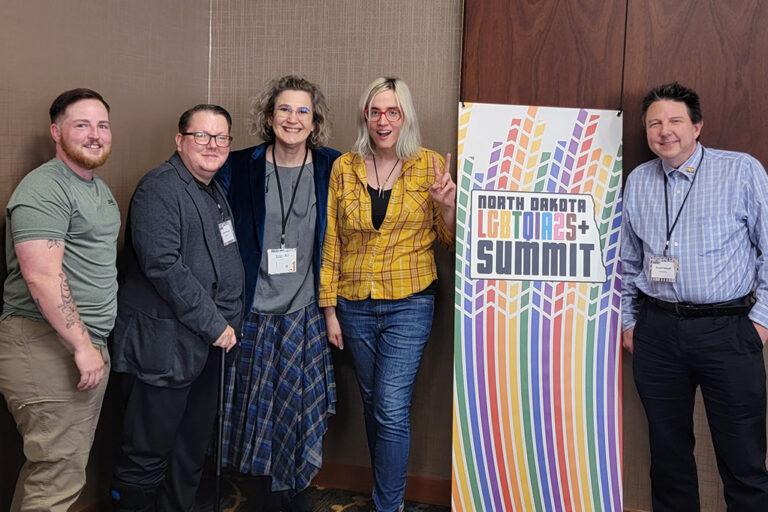UND School of Medicine & Health Sciences researchers awarded nearly $500,000 from U.S. Department of Housing and Urban Development for radon projects
“Because the threat is not visible, it’s not something that people readily appreciate and act upon,” said Gary Schwartz, professor and chair of the UND School of Medicine & Health Sciences (SMHS) Department of Population Health. He was speaking of radon gas, the colorless and odorless radioactive gas present in many homes in North Dakota. “We often say it’s like trying to convince your 10 year-old to save for retirement.”
In other words, although the evidence is clear that radon causes not only lung cancer but likely contributes to other illnesses such as stroke, the delay in radon’s effects means that convincing homeowners to act on mitigating their exposure today is a challenge.
Looking for support in researching ways of convincing people to take radon more seriously, Schwartz and a team of researchers at UND applied for a grant from the U.S. Department of Housing and Urban Development (HUD).
In May, the team received confirmation that they were awarded $486,377 for their project – one among 57 grants HUD announced “that will help transform communities.”
Opening the lock
According to the U.S. Environmental Protection Agency, every county in North Dakota is considered Zone 1 for radon levels, placing the state in the top 25% of states for radon prevalence. Many studies place North Dakota first in the U.S. for the level of residential radon to which homeowners are exposed.
Even so, radon’s literal invisibility complicates researchers’ efforts to educate the public on its effects.
Assuming a homeowner opts to act on radon, those in warmer climates can seek out low-cost radon mitigation by simply ventilating their homes better year-round (although this isn’t a long-term or perfect solution). Such strategies are harder in North Dakota, where opening windows is impractical for much of the year and home mitigation systems can be costly.
All of this can make convincing homeowners to follow through on testing for radon a challenge, said Schwartz.
To that end, added Soojung Kim, associate professor and chair of UND’s Department of Communication, the researchers will use the grant to engage North Dakotans directly on identifying factors that will help them take action on radon.
“Our overall goal is understanding the last step of this whole behavioral chain,” said Kim. “Homeowners order the test kit, but it’s often sitting on their counter, unused. How can we get them to act?”
This effort is the latest in a series of projects that the team, which includes Marilyn Klug, professor in the Department of Population Health, has initiated on radon communication strategies. More than six years ago, the research team developed an app for smartphones that informs users about radon. The group subsequently compared the app to traditional communication methods for both approaches’ ability to “unlock” homeowners’ behaviors around radon.
“Originally, I would have thought that getting people to test their homes for radon would be a one-step thing – it’d be like a padlock where we just need to find the key,” said Schwartz. “What we learned from our clinical trials is that it’s more like a combination lock. You have to turn 17 notches to the left, 31 to the right, and four to the left again to get the lock to make the tumblers work.”
After years of research, said Schwartz, the team is finally close to opening that lock.
“We’ve gotten to the point where we are very good at teaching people about radon,” he added. “And we’ve tested whether or not the app is better than brochures – and it’s way better. It teaches users more about radon and stimulates their interest in testing for radon such that they’re three times more likely to order a test kit on their phone.”
National leader
Given how the researchers have already demonstrated that they can change peoples’ thinking about radon, the next step is motivating and changing behavior.
That’s the goal of the HUD grant.
“As the only medical school in the state, and with radon such an important public health issue here, we hope to use this grant both to better change radon testing behaviors and involve community members who are actually affected by radon exposure,” said Kim. “We look at this as a service to the state that also contributes to our research mission.”
Calling a radon test a “cancer test for your home,” Schwartz noted how UND has become a national leader on radon research – not only in terms of epidemiology and education but communication.
“We have collaborated on several papers, including one in the journal Neurology, showing that radon also may cause stroke,” Schwartz said. “And that’s very, very big. Yes, 21,000 people die each year from radon-induced lung cancer. But there are more than 795,000 strokes every year. So, if we can reduce that number even modestly, you can see what the return on health would be from reducing exposure to radon.”
New projects funded by the grant are likely to kick-off around September, concluded Schwartz, who is also working on radon education thorough the SMHS Radon Outreach And Research (ROAR) project.
“Radon is a national problem, but since we have more of it here than most states, it’s really a North Dakota problem. So, it’s an opportunity for UND to exert national leadership in this area. Who better to do it than us?”


